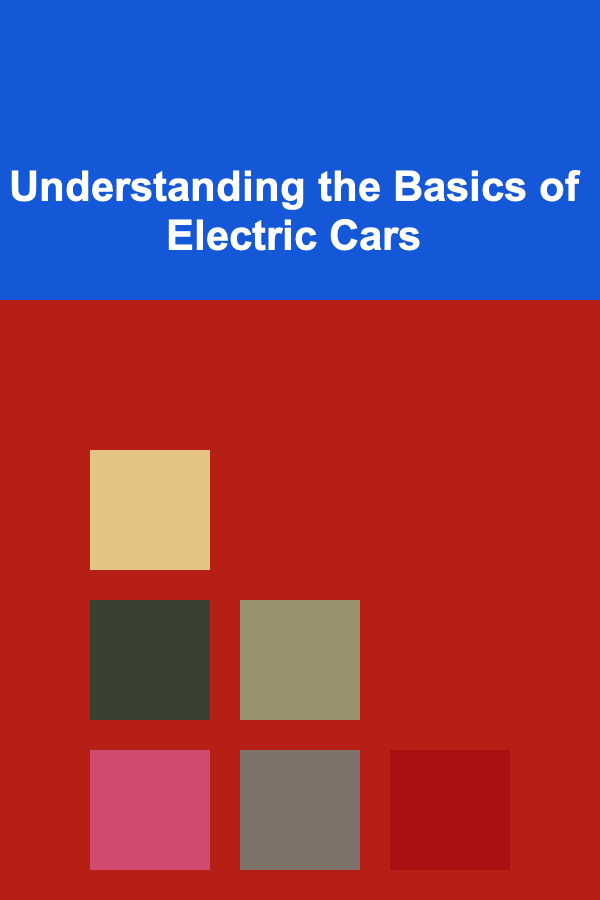
How to Master Robot Trajectory Generation
ebook include PDF & Audio bundle (Micro Guide)
$12.99$10.99
Limited Time Offer! Order within the next:

Robot trajectory generation is one of the most vital aspects of robotic systems, particularly when the goal is for the robot to move efficiently, precisely, and safely in a given environment. Whether you're working with robotic arms in a factory, autonomous vehicles, or drones, understanding how to generate optimal trajectories can significantly enhance performance and ensure the robot operates smoothly. This article will provide an in-depth guide to mastering robot trajectory generation, focusing on the various techniques, challenges, and best practices in the field.
What is Trajectory Generation?
Trajectory generation in robotics refers to the process of planning a robot's path from one point to another, considering factors such as the robot's physical constraints, obstacles in the environment, and the dynamics of the robot itself. The goal of trajectory generation is to determine the exact sequence of positions, velocities, and accelerations the robot should follow over time to reach its target while optimizing various performance metrics such as speed, energy consumption, and smoothness.
In a more technical sense, trajectory generation involves calculating a sequence of states, typically represented in time, that the robot must follow. These states include not only the spatial positions but also the velocity, acceleration, and sometimes the jerk (rate of change of acceleration) of the robot.
Types of Trajectories
There are various ways to classify robot trajectories, depending on the context. However, a few essential types of trajectories are frequently encountered:
- Joint Space Trajectories: In robots with multiple joints (e.g., robotic arms), joint space trajectories define the motion of each individual joint over time. This type of trajectory is most useful when the robot's goal is to move to specific joint configurations while taking joint limits into account.
- Task Space Trajectories: These are trajectories defined in the task space, often the Cartesian space. For example, in a robotic arm, this could involve specifying the motion of the end-effector (the tool or gripper at the end of the arm) rather than the individual joint angles. Task space trajectories are crucial for tasks such as assembly or pick-and-place operations.
- Cartesian Trajectories: These describe the motion of the robot's end-effector in a 3D space. In industrial robots, such as those used for welding or painting, Cartesian trajectories allow precise control over the tool's path to ensure high-quality output.
- Path vs. Trajectory: The term "path" refers to the geometric route or curve that a robot follows, independent of time, while a trajectory includes both the path and the time element, specifying how quickly the robot should move along that path.
Key Elements of Robot Trajectory Generation
To master robot trajectory generation, one must understand the key elements that contribute to creating an optimal trajectory. These elements include:
1. Kinematics
Kinematics refers to the study of motion without considering forces. In trajectory generation, kinematics is essential because it governs how the robot moves based on its joint configurations and task space coordinates.
- Forward Kinematics (FK): FK is used to calculate the position and orientation of the end-effector given a set of joint angles.
- Inverse Kinematics (IK): IK involves computing the necessary joint angles required for the robot to reach a specific task-space position. IK is a crucial part of trajectory generation for task-space-based motion planning.
Understanding the kinematic constraints of a robot is crucial when designing smooth trajectories, as the robot may have to deal with joint limits or other constraints, such as avoiding collisions with obstacles.
2. Dynamics
While kinematics deals with position and velocity, dynamics takes into account the forces and torques that influence the robot's motion. Dynamics plays an important role in generating feasible trajectories because it helps to model how the robot will move under real-world physical constraints.
- Mass and Inertia: Each robot has mass and inertia, which affect how it accelerates and decelerates. A trajectory needs to consider these factors to avoid unrealistic acceleration or jerk.
- Forces and Torques: To avoid mechanical overloads or instability, the trajectory should ensure that the forces and torques on each joint remain within allowable limits.
In trajectory generation, dynamic models are often used to calculate the robot's movement and to ensure that the robot moves in a physically feasible and energy-efficient manner.
3. Constraints
Constraints are critical in robot trajectory generation, as they define the limits within which the robot must operate. These constraints can take several forms:
- Physical Constraints: These include joint limits (such as maximum angular velocity or range of motion) and workspace boundaries (such as avoiding collisions with obstacles).
- Velocity and Acceleration Limits: To prevent jerky movements or excessive wear on the robot, the trajectory must respect the robot's velocity and acceleration limits.
- Obstacle Avoidance: If the robot is moving in an environment with obstacles, the trajectory generation algorithm must ensure that the robot avoids these obstacles while still reaching its target.
- Task Constraints: These are specific to the task the robot is performing. For instance, in assembly tasks, the trajectory might need to follow a precise path to ensure the parts are assembled correctly.
4. Optimization
Optimization is about improving the trajectory to meet multiple objectives simultaneously, such as minimizing time, energy consumption, or jerk while respecting all constraints.
Optimization can take many forms in trajectory generation:
- Time Minimization: For robots operating in real-time applications, minimizing the time taken to complete a task is crucial.
- Energy Optimization: In mobile robots, energy efficiency is a significant concern, particularly for battery-operated robots such as drones or autonomous vehicles.
- Smoothness: Reducing high-frequency oscillations or sharp turns in the trajectory (such as minimizing jerk) improves both robot performance and the longevity of the mechanical components.
Various optimization techniques such as linear programming, quadratic programming, and gradient-based methods are used to solve these multi-objective problems.
Methods for Trajectory Generation
There are several well-established methods for generating robot trajectories, ranging from analytical to numerical approaches. The choice of method depends on the complexity of the robot and the environment.
1. Polynomial Interpolation
Polynomial interpolation is a common method for generating smooth trajectories. The idea is to fit a polynomial function (e.g., cubic or quintic splines) through a set of waypoints, ensuring that the trajectory is continuous and smooth in both position and velocity.
- Cubic Splines: These are widely used to generate smooth trajectories because they offer continuity in both position and velocity and are relatively simple to compute.
- Quintic Splines: These provide continuity in position, velocity, and acceleration, making them ideal for cases where higher smoothness is needed.
Polynomial-based methods are useful in applications where a smooth, continuous trajectory is required, such as in robotic arms used for precision tasks.
2. Piecewise Linear Trajectory Generation
In some cases, generating a trajectory using piecewise linear segments might be adequate. This method involves breaking the trajectory into smaller, straight-line segments and solving for the velocity and acceleration profiles along each segment.
Piecewise linear trajectories are relatively simple to compute, but they may not provide the smoothness required for all tasks, particularly in high-speed applications.
3. RRT (Rapidly-exploring Random Trees) and PRM (Probabilistic Roadmap)
For more complex environments, such as those involving obstacles or unknown terrain, algorithms like Rapidly-exploring Random Trees (RRT) and Probabilistic Roadmaps (PRM) are frequently used. These are randomized, tree-based algorithms used for motion planning, where the robot explores the space randomly to find a path from the start to the goal.
- RRT is particularly effective for high-dimensional spaces and when the environment is dynamically changing or partially known.
- PRM is used when the environment is relatively static and the robot needs to compute a roadmap for navigating through it.
These algorithms are best suited for applications like autonomous vehicles and robots navigating unstructured environments.
4. Model Predictive Control (MPC)
Model Predictive Control (MPC) is a popular control strategy for trajectory generation in dynamic systems. MPC involves predicting the robot's future behavior and optimizing the trajectory in real time based on that prediction.
MPC works by solving an optimization problem at each time step, considering both the robot's current state and the dynamics of the environment. It is particularly useful in situations where the robot needs to react to changing conditions in real time, such as in autonomous driving.
5. Machine Learning Approaches
In recent years, machine learning approaches have been applied to trajectory generation. These methods involve training a model (often using reinforcement learning) to generate optimal trajectories based on past experiences and feedback from the environment.
- Reinforcement Learning (RL): RL can be used to train robots to perform specific tasks by learning from trial and error, which makes it particularly useful for applications like path planning in unknown or complex environments.
- Deep Learning: Deep learning models, such as neural networks, can be used to predict trajectories from large datasets, allowing robots to generate trajectories based on learned features of the environment.
These machine learning techniques are best suited for highly dynamic and complex environments, where traditional planning methods may struggle.
Practical Applications of Trajectory Generation
Trajectory generation plays a critical role in many robotics applications. Some of the most common applications include:
- Robotic Arms: In industrial settings, robotic arms are used for tasks such as welding, assembly, and painting. Trajectory generation ensures the arm moves smoothly and accurately to perform these tasks.
- Autonomous Vehicles: Self-driving cars rely on trajectory generation to navigate complex road networks, avoid obstacles, and ensure passenger safety.
- Drones: Drones use trajectory generation to plan their flight paths while avoiding obstacles, optimizing energy use, and ensuring smooth movement for video capture or delivery services.
- Medical Robotics: Robotic surgery systems require highly precise trajectory generation to perform minimally invasive operations with precision and safety.
Conclusion
Mastering robot trajectory generation is essential for the success of many robotic systems. By understanding the key concepts of kinematics, dynamics, constraints, and optimization, and utilizing a variety of methods such as polynomial interpolation, RRT, MPC, and machine learning, engineers can develop robots that are faster, more efficient, and more capable.
The field of trajectory generation is constantly evolving, with new algorithms and techniques emerging regularly. As robots become more integrated into our everyday lives, the importance of mastering trajectory generation will only continue to grow, enabling robots to perform increasingly complex and varied tasks.

How to Incorporate Labels for Dietary Restrictions
Read More
How to Incorporate Personal Touches into Your Hobby Space
Read More
How To Paint Cityscapes at Night
Read More
How to Use Deep Learning to Create Scalable Passive Income
Read More
Understanding the Basics of Electric Cars
Read More
How to Coach Clients Through Career Transitions in Tech
Read MoreOther Products

How to Incorporate Labels for Dietary Restrictions
Read More
How to Incorporate Personal Touches into Your Hobby Space
Read More
How To Paint Cityscapes at Night
Read More
How to Use Deep Learning to Create Scalable Passive Income
Read More
Understanding the Basics of Electric Cars
Read More